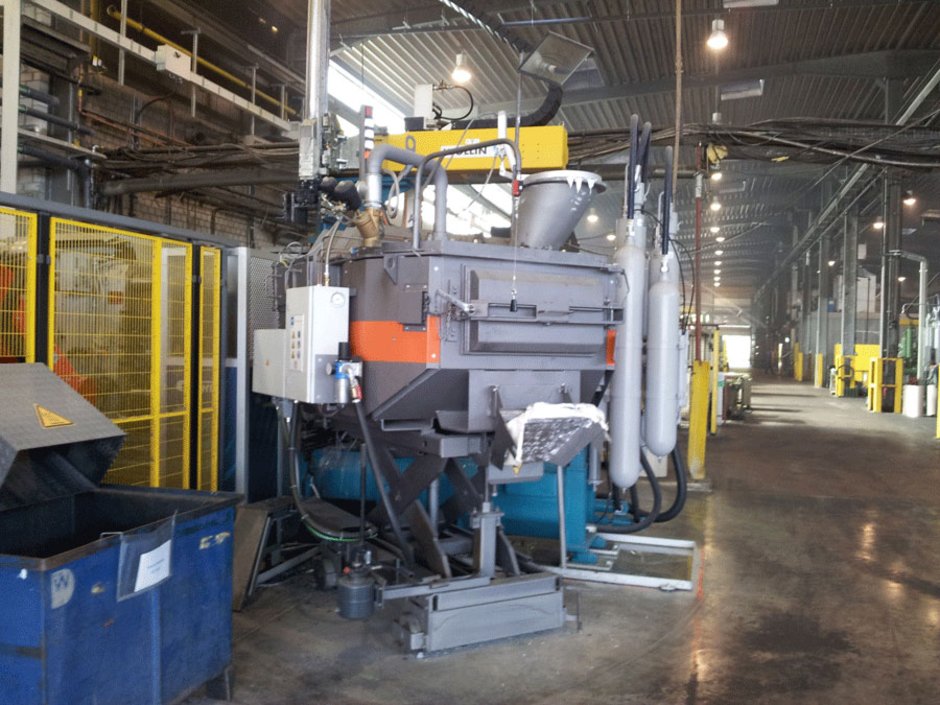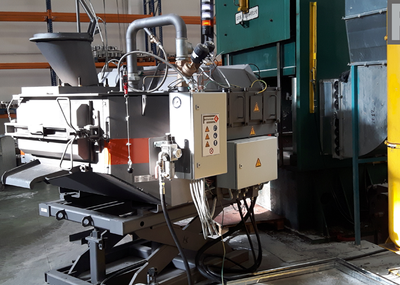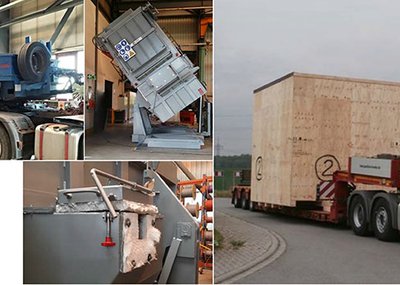Cycles shortened by six seconds, ten percent less energy: dosing units with technically optimised controls and insulation save costs and maintenance
The energy turnaround in industry is accompanied by a change in thinking: many things which were tolerated in times of cheap fuels are no longer acceptable in terms of raising efficiency, sustainability and environmental protection. This affects the energy-intensive metal-working industry in particular. Since the end of 2010, some of the existing dosing furnaces at Druckguss Westfalen GmbH & Co. KG, a high-quality aluminium parts specialist, have therefore been replaced with modern ZPF Foundry4 GmbH models which have better insulation and lower maintenance requirements. At the same time, it was possible to shorten cycle times and improve dosing precision with the straightforward control unit of the ThermDos plant, which is why several of the existing units have also been equipped with it. Overall, the pressure casting company has been saving up to six seconds per cycle and therefore around ten percent in energy ever since.
The main production focus at Druckguss Westfalen is on high-quality components for the automotive, electrical and office furniture industries and for mechanical engineering. Sustainability plays an important role for this medium-sized company. It already begins with the simulation of all tools by means of modern data technology. This is to ensure an optimised process sequence right from the start in order not to waste resources. The modernisation and automation of the machinery, including the dosing furnaces, was a significant part of these efforts to increase efficiency. For three of the units, a specific dosing principle required very complicated operation and cleaning. A series of components were also very highly stressed and had to be maintained frequently. They were therefore to be replaced. The overall condition of some furnaces from another leading manufacturer for this application area was, however, still acceptable. These were therefore just to be fitted with new control units. “However, the supplier’s after-sales service was not satisfactory. For example, the price for modernising their machinery up to the latest state of technology was not in line with the market“, explains Johannes Krause, head of purchasing at Druckguss Westfalen. The decision was therefore taken to install ThermDos plant and ZPF Foundry4 GmbH control systems.
Established technology and improved efficiency and cast quality
The fundamental functional principle of the ThermDos plant and its operational application correspond to the requirements of technical standards. New technological design engineering possibilities and ideas were developed in several areas in order to cope with the increased efficiency and quality requirements. Higher-quality fireproof lining and microporous insulation were used to keep the thermal heat in the interior space for longer and thus to save energy. Extremely highly durable silicium carbide (SiC) rods are used for heating.
The capacity of the units supplied by ZPF Foundry4 for Druckguss Westfalen ranges from 550 to 1,100 kg. Material feed and removal are below the molten level so that oxygenation and thus oxidation are largely avoided, which has a positive effect on the quality of casting. “The scanning system is located outside the hot area and is independent of the conductivity of the SiC protective pipe thanks to a second electrode”, explains Walter Engel, project manager at ZPF Foundry4. Since filling is also possible during dosing, the ThermDos can be operated continuously. A height-adjustable lift-tip support frame makes emptying and cleaning even easier. Alloy changing can therefore be realised within a short period of time.
Shorter cycles and higher precision due to modern design and control
In order to guarantee the rapid availability of replacement parts, standard designs which are freely available on the world market and which fulfil the demanding technical requirements were used for many wearing parts including the control components. Rapid availability is therefore guaranteed without having to hold large stocks. For faster replacement, the heating rods were fixed with clips instead of screw clamps. In addition, the pneumatic system was designed in such a way that an oiler was not required. “This removes the risk of over-oiling which could otherwise lead to malfunctions” according to Engel. In addition, a large cross-section was selected for the piping which leads to rapid ventilation and more precise dosing.
The ThermDos dosing control also makes a decisive contribution to the high precision. Simple synchronisation with the pressure casting machine additionally shortens the overall cycle time. A Siemens SPS S7-300 is used which is operated by means of a touch panel display. The user interface was kept very simple and user-friendly by developing a machine-oriented menu navigation system supported by graphics. This means that the dosing weight can be entered in kilograms whilst the temperature is monitored or the dosing is corrected. Pressure curves can also be represented graphically. “Clarity in operation is very important for foundry staff, especially for new employees”, explains Krause. “Besides, the old control system was inflexible”. Overall, the time per dosing cycle for a quantity of two to six kilograms of metal at Druckguss Westfalen has decreased by four to six seconds compared to the furnaces previously used.
Ten percent less energy requirement
“Power consumption has also gone down by around 10 percent compared to the older systems”, according to the head of purchasing. The reason for this is the better insulation of the furnace body. At the same time, deviations in the dosed quantity amount to plus/minus 1.5 percent. In order to also allow the existing furnaces to profit from this higher precision and the shorter cycles of the modern control units, three of them were converted to the ZPF Foundry4 dosing system– with evident success: “Currently, we are planning to convert another two furnaces. Further follow-on commissions are planned in the near future.”
Druckguss Westfalen GmbH & Co.KG was founded in 1964 in Geseke with the aim of further opening up the possibilities of the then trend-setting pressure casting system. Initially, cast parts were just produced from zinc; today, mainly aluminium components are produced. Technically sophisticated products through to ready-to-install series production parts are manufactured even in large-volume production. Apart from pressure casting and machine processing, services also include mechanical and galvanic surface processing. Druckguss Westfalen is a subsidiary of Dr.-Ing. Georg Weddige Industriebeteiligungen Holding, which is family-owned. The group has been active in the fields of metal production and metal casting for decades.
auch verfügbar in <link record:tt_news:12547 internal-link>![]()
![]()
###COMPANY_LINK### <link linktosingle>ZPF therm Maschinenbau GmbH




